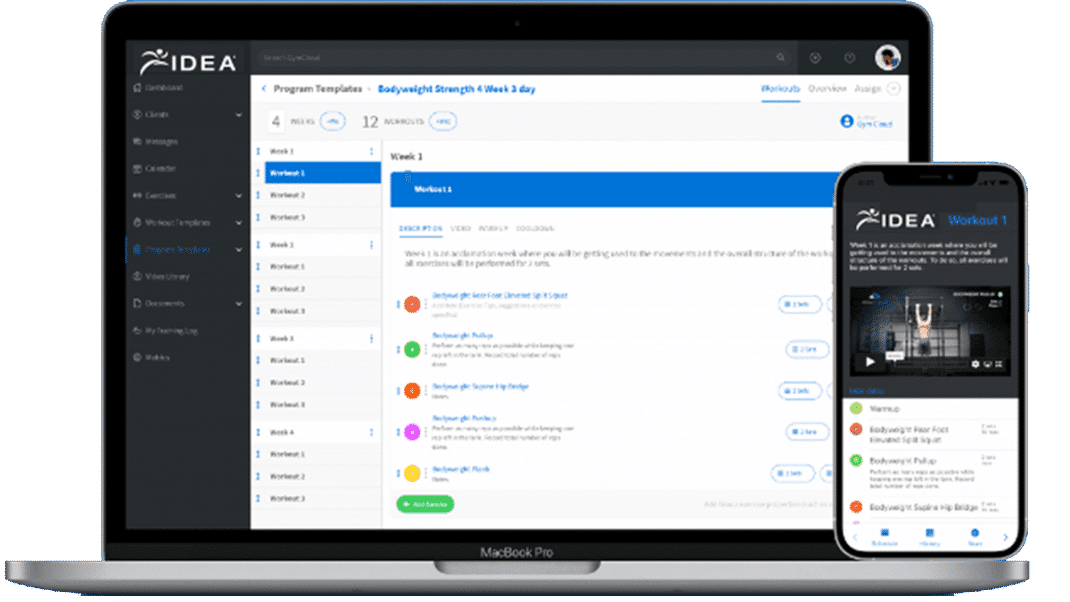Selling Services in a Faltering Economy, Part 1
The first in a two-part series that proves you can be successful in a slumping economy.

1. Target Your Expertise
Building a successful brand is about defining and communicating your expertise and providing your clients with value. While these attributes are always important, they become even more significant in a faltering economy—where potential clients want to be sure they will get results when they invest their time and hard-earned income. One step you can take to boost your business is to identify your primary area of expertise and then use that knowledge base to target a particular market niche. For example, weight loss experts can provide coaching services for athletes who want to achieve and maintain an ideal competition weight. Experts on special populations can develop exercise programs for individuals with specific health issues, such as coronary artery disease, hypertension, diabetes and asthma. If your expertise is in women’s health and fitness, you can specialize in personal training services for women before, during and after pregnancy. Children’s health experts can offer obesity prevention programs for organizational clients such as K–12 school districts. Anything you do that connects your expertise to a specific market niche will help you enhance your reputation as an expert, build your brand and boost your business.
To target your expertise successfully, you must consistently work at developing your knowledge base. You can do this by engaging in three activities:
- Reading. Read as much as you can. This includes books, manuals, magazines, academic journals, white papers, newsletters and blogs. Identify the leading experts in your field, and review the content they develop.
- Writing. As you increase your knowledge base, share your expertise by starting a blog, developing a newsletter, creating articles and white papers, writing a manual and even working on a book. Writing is a great way to demonstrate your expertise, promote your business and even generate income.
- Speaking. The best way to demonstrate your expertise and become a recognized expert in your field may be to speak publically on a regular basis. This includes presenting at clinics, seminars, keynotes, webinars and teleseminars.
2. Differentiate Your Products, Price and Relationships
Differentiation is a tried-and-true marketing technique that can provide value in any economy. It works because it helps you clarify and promote your competitive advantage, which is the specific, tangible value you provide to customers that your competitors do not. Companies such as Apple (innovative technologies), Miller (low-calorie, or “light,” beer) and Nike (premium athletic apparel) have found success by differentiating their core product from similar products in the marketplace. Think about these three types of differentiation: product, price and relationship. Product differentiation describes the specific ways your goods and services differ from your competitors. Price differentiation describes the ways your prices differ from those of your competitors and how you use fees to create a market position (i.e., whether you set your fees below, at or above the market rate). Relationship differentiation describes the unique steps you take to build high-trust, long-term relationships with clients. To start the differentiation process, answer the following questions about your business:
- What are my clients able to do because of me (known as your value proposition)?
- How do I help my clients achieve these outcomes (i.e., your specific goods and services)?
- How do my answers to the first two questions make me different from my competitors?
- Based on my answers to the above, what is my most significant competitive advantage (e.g., superior products, lower prices, more personalized service)? Similarly, why should a potential customer purchase my goods and services instead of those offered by a competitor?
3. Protect Your Current Client Base
The most effective way to build a successful business is to keep the customers you have, which is much easier than bringing in new ones. There are several steps you can take to protect your client base. First and foremost, always provide your clients with something of value beyond the contracted package. Nothing increases customer satisfaction more than the feeling of receiving unexpected benefits. Consider these examples of how to add value to your clients’ experience:
- Distribute articles and newsletters that provide valuable information.
- Write a book, eBook, manual or booklet, and provide it to clients free of charge.
- Develop a teleseminar or webinar, and give clients a copy of the recording.
- Invite clients to attend a live clinic or seminar.
- Develop a blog, and encourage clients to follow you so they can receive useful content on a continuous basis.
- Run promotions such as product discounts or bundles to attract new customers, and offer those discounts to your current clients as well.
Another way to protect your customer base is to evaluate client satisfaction. While you can do this in a formal manner using resources like SurveyMonkey.com, the process can be as simple as personally asking individual clients how they feel about their training experience. Their answers to the following questions can give you a very good idea of what you are doing well and where you may need to improve:
- Overall, how would you rate your personal training experience?
- What is the best part of your personal training experience?
- What can I do to improve your experience and exceed your expectations?
4. Develop Multiple Revenue Streams
Your revenue streams represent the various ways you bring income into your business and enhance your professional reputation. Ideally, you should have a variety of ways to generate revenue (e.g., coaching, training, speaking, consulting and products). Having multiple streams can be beneficial for several reasons:
- More money. The more revenue streams you have, up to a point, the more substantial your bottom line.
- Sales options. Multiple revenue streams provide more options to make a sale. For example, a potential client may not hire you as a personal trainer but might purchase your book or CD. Another client may not purchase your book or CD but might attend one of your seminars, webinars or teleseminars.
- Resource. Providing clients with multiple ways to obtain information and services—for example, through eBooks, webinars and video programs—makes you a more valuable resource.
- Professional development. Every time you create a new product or service, you’ve developed another new, specific knowledge base and skill set to go along with the successful implementation or production of that product or service.
- Brand awareness. Multiple revenue streams serve as an excellent marketing tool, because they broaden your client base and allow you to connect with more people.
5. Give Gifts That Reward You, Too
Personal training is a business based on perceived expertise. Giving away small portions of your goods and services lets you demonstrate your expertise and can motivate potential customers to buy. However, you must be careful. If you give away too much, you can deter potential customers from purchasing your goods and services. As the saying goes, “Why buy the cow when you can get the milk for free?” Give away just enough to show that you can help clients, to promote your business and to get people interested in what you have to offer. Here are three examples of how you can do this:
- Facilitate local presentations for groups of potential buyers. Whatever your area of expertise, identify opportunities to present seminars, clinics, teleseminars or webinars for potential clients. These may not be paid opportunities, but participants will be able to experience the quality of your services, which increases the chances that they will purchase those services.
- Give away your products in small doses. For a small fee, sponsor a local meeting of a professional association that has potential clients in attendance. As the sponsor, you will have an opportunity to promote your goods and services. Another way to connect with potential clients is to offer a personal training product or package as a raffle prize.
- Offer free consultations for individuals in your target market niche.
Many personal training businesses are experiencing tough times. But if you incorporate the above suggestions, your business will experience positive results. In the January issue of IDEA Trainer Success, I will discuss five more steps you can take to sell your services profitably in a faltering economy.
Tyrone A. Holmes, Ed.D
Tyrone A. Holmes, Ed.D, CPT, is a certified personal trainer through the American Council on Exercise and a Level 2 cycling coach through USA Cycling. He provides Cycle-Max Coaching for cyclists and multisport athletes who want to improve their performance on the bike and Healthy Life Coaching for individuals who want to lose weight and develop healthier lifestyles. He also provides Business Coaching for personal trainers, athletic coaches and other entrepreneurs. Dr. Holmes has published two books: Training and Coaching the Competitive Cyclist (2010) and Developing Training Plans for Cyclists and Triathletes (2011). His next book, The Business of Training and Coaching will be published in 2013. Visit his websites at www.HolmesFitness.com and www.DoctorHolmes.net.





